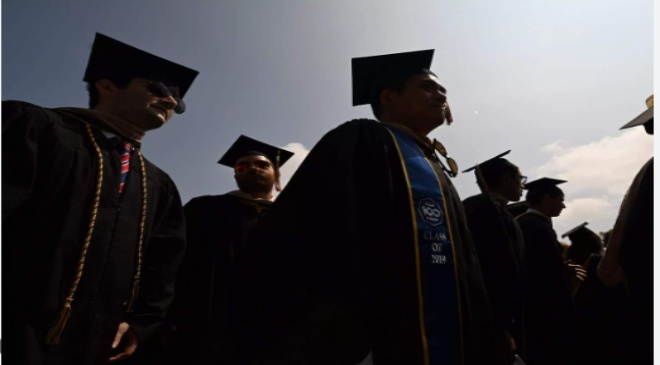- For years, income-driven repayment plans for student-loan borrowers were not working as intended.
- That’s why Biden introduced a proposal to reform those plans and make monthly payments cheaper.
- But implementation is key, and one expert worries it “doubles down on a failed system.”
Also Read– How To Save $10,000 in a Year: 10 Steps
Angel, 52, has $480,000 in student debt due to a number of factors.
When Angel — who previously spoke to Insider and requested their last name be withheld for privacy — was pursuing two advanced degrees, they had to work at the same time to save money, causing them to spread out their education over the course of that decade.
During that time, Angel’s loans were in in-school deferment, which meant they weren’t repaying the loans, but interest was still piling up. Angel said they were advised by a customer service representative at a student-loan company to stay in school to defer the loan payments.
Then, after Angel received their degrees, they enrolled in an income-driven repayment (IDR) plan, which is intended to give borrowers affordable monthly payments with the promise of loan forgiveness after at least 20 years. But the plans have seldom worked as intended, leading borrowers to pay off their loans for much longer than they signed up for.
Also Read– The housing market correction, as told by 4 charts
Angel worries they are one of those borrowers, and they have little faith they’ll be able to pay off their debt load anytime soon.
“I’ve struggled to find employment that is sufficient enough to even just pay for a roof over my head and pay my rent, pay for food, pay for a car. I don’t live an extravagant life, but just the basic necessities of life, and so I’ve done the income repayment plan for a while,” Angel said. “But it’s been very confusing and they don’t make it easy.”
President Joe Biden intends to remedy that. In January, he unveiled a proposal to make IDR plans much more workable for borrowers. Specifically, it would amend the Revised Pay As You Earn (REPAYE) plan, which was created in 2016 to calculate borrowers’ monthly payments based on their discretionary income — and if implemented properly, the changes would cut undergraduate monthly payments in half to no more than 5% of discretionary income, down from the current 10%.
Additionally, the reforms would shorten the timeframe to receive loan forgiveness by allowing borrowers’ balances to be forgiven after ten years if they originally borrowed $12,000 or less, along with preventing interest from accruing on borrowers’ principal to ensure their balances cannot increase when paying off their loans.
Also Read– J&J’s Court Loss Weakens Controversial Legal Tactic Used by Big Companies
What makes Biden‘s approach significant this time around is that rather than creating an entirely new IDR plan, he is amending REPAYE and gradually sunsetting other existing programs to streamline the process for new borrowers seeking aid in repayment.
Those changes will be especially helpful for borrowers at risk of delinquency and default, Matthew Chingos, vice president of education and data policy at the think-tank Urban Institute, told Insider. But after so many years of failures with IDR plans, Chingos said he’s concerned not much will change.
“The fine print is you have to navigate this system that just hasn’t worked for a long time, and we have to kind of trust the federal government that despite the failures of several administrations of both political parties, that somehow this time is going to be different,” he said.
“It doubles down on a failed system”
Chingos coauthored an Urban Institute analysis of Biden’s proposed changes to IDR, and it estimates that the share of borrowers enrolled in IDR who earn a bachelor’s degree that fully pay off their loans would fall from the current 59% to around 22%, and the share of those paying no more than half of what they borrowed would rise from 22% to 49%.
“The Biden plan will transform IDR from a safety net that supports borrowers with low incomes into a substantial subsidy for most undergraduate students who take on debt,” the analysis said. “Under current IDR plans, most borrowers can expect to repay some or all their debt. If the Biden plan is implemented as proposed, fully repaying a student loan will be the exception rather than the rule.”
Also Read– Tips for Student Loan Borrowers Waiting for Answers on Debt Relief
Those changes might sound good in theory, but implementation is key, and Chingos said he’s worried that “it doubles down on a failed system that just has never worked well.”
Insider spoke to a worker at a small Iowa-based student-loan company last year, who requested to remain anonymous to protect her employment. She was there when the Education Department created the first modern income-based repayment plan in 2007, and she said it was “a bad program from the very beginning.”



















